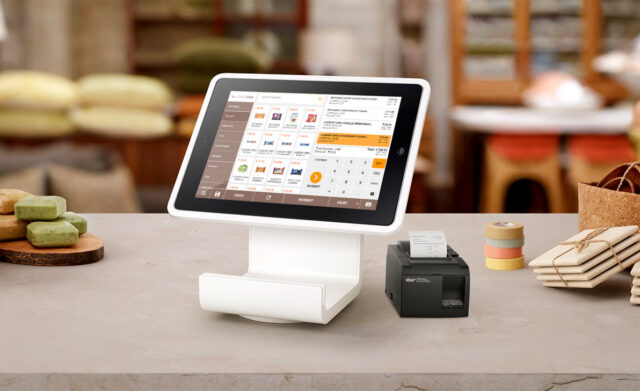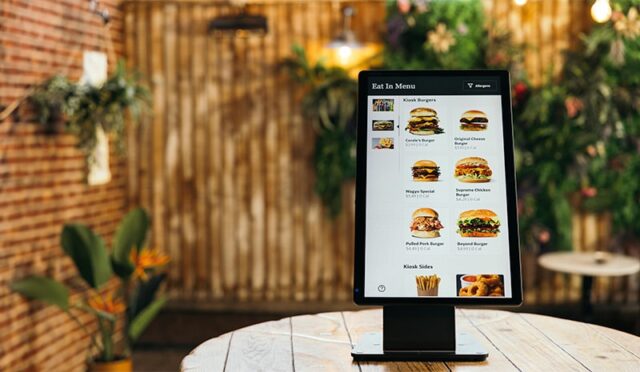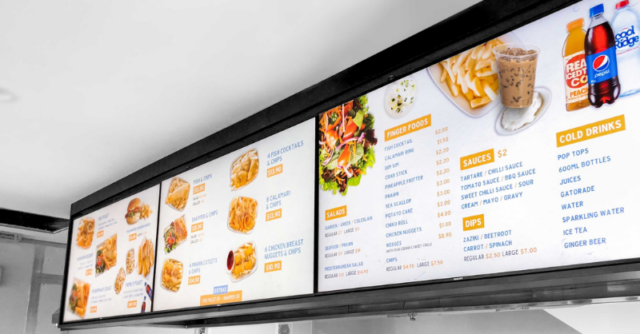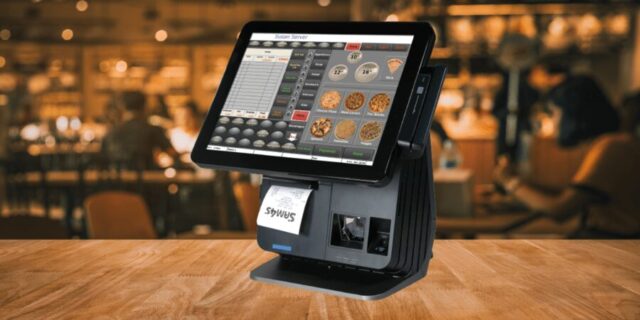
Digital dining is here, and it plans to stay. We’re not talking about just another culinary trend, it’s about a dynamic change that will alter the entire universe of cooking. The fast food industry, celebrated for its speed and convenience, is pioneering this transformation.
By integrating advanced Point of Sale (POS) systems, these establishments are not only optimizing their operations but are also significantly elevating the customer’s dining experience. As the industry becomes more saturated, the emphasis on delivering a superior and memorable customer experience becomes even more crucial.
The Evolution of Fast Food

Tracing back to its inception, the fast food industry was all about simplicity and speed. However, the journey from traditional, manual order-taking to today’s sophisticated digital dining experience has been nothing short of revolutionary. This evolution, fueled by relentless technological advancements, has reshaped the way consumers interact with fast food establishments.
No longer do customers have to endure the inconvenience of shouting their orders across a bustling counter or waiting in long queues. Today, the integration of touch screens, intuitive mobile apps, and user-friendly digital kiosks have become the norm.
What is a POS System?
At its core, a Point of Sale (POS) system is a sophisticated platform that facilitates sales transactions. But in the context of a fast food restaurant, it’s so much more. It’s the nexus where technology meets customer service. A modern fast food POS system is a blend of software and hardware designed to manage orders, process payments, and integrate various other restaurant operations.
From touch screen monitors to barcode scanners and digital payment terminals, the components of a POS system are tailored to ensure seamless operations. Moreover, with the advent of cloud-based POS systems, real-time data syncing, inventory management, and remote access have become standard features, further enhancing operational efficiency.
Streamlined Ordering Process

One of the most tangible benefits of POS systems in the fast food industry is the streamlined ordering process. Digital menus, often equipped with vibrant visuals and detailed descriptions, allow customers to browse and select their preferred dishes with ease. Additionally, self-service kiosks empower customers, giving them the autonomy to customize their orders, all while reducing the pressure on the counter staff.
This not only minimizes human interaction – a feature especially appreciated in today’s post-pandemic world – but also ensures that orders are processed faster, leading to reduced wait times and a more satisfying customer experience.
Faster Service and Reduced Wait Times
In the fast food domain, speed is of the essence. POS systems play a pivotal role in expediting service. With intuitive interfaces and automated order processing, these systems minimize manual intervention, leading to quicker order turnarounds. For instance, many modern POS systems are integrated with kitchen display systems, ensuring that orders are instantly relayed to the kitchen.
This real-time communication between the front and back of the house drastically reduces wait times. Furthermore, several studies have indicated a direct correlation between reduced wait times and enhanced customer satisfaction, underscoring the importance of swift service in the fast food industry.
Customization and Personalization

In today’s culinary world, customization is king. Modern consumers crave a personalized experience, and POS systems are perfectly equipped to cater to this demand. These systems allow customers to tailor their orders to their exact preferences, be it adding extra toppings on a pizza or adjusting the spice level in a curry. This level of customization ensures that customers get exactly what they crave, leading to a more satisfying dining experience.
Moreover, with data analytics capabilities, POS systems can remember customer preferences, allowing restaurants to offer personalized recommendations and promotions, further enhancing the customer’s journey.
Enhanced Payment Options
The digital revolution has also transformed the way we transact. POS systems in fast food establishments now offer a plethora of payment options, catering to the diverse preferences of consumers. From traditional credit and debit card payments to digital wallets and contactless payments, customers have a multitude of choices at their disposal.
This flexibility not only adds a layer of convenience but also enhances the overall dining experience. In an era where cashless transactions are becoming the norm, the ability of POS systems to process a wide range of payment methods is invaluable
Order Accuracy and Reduced Errors

Accuracy is paramount in the fast food industry. A minor error can lead to customer dissatisfaction. Thankfully, POS systems come to the rescue. By automating the ordering process and minimizing manual input, these systems drastically reduce the margin for error.
Whether it’s ensuring that the right toppings are added to a burger or that special dietary requests are adhered to, POS systems ensure impeccable accuracy. Several industry reports have highlighted a significant reduction in order-related errors post the integration of POS systems, further emphasizing their importance.
Loyalty Programs and Rewards
Loyalty programs are a tried and tested method to retain customers, and POS systems are perfectly poised to integrate these programs. With their data analytics capabilities, these systems can track customer purchases, allowing restaurants to offer tailored rewards and promotions.
Whether it’s a discount on a favorite dish or points accumulated for every purchase, these incentives play a crucial role in ensuring repeat business. By integrating loyalty programs, POS systems not only enhance the customer experience but also drive business growth.
Inventory Management and Efficiency
Beyond enhancing the customer experience, POS systems also play a pivotal role in optimizing restaurant operations. One of the standout features of modern POS systems is inventory management.
These systems can track stock levels in real-time, ensuring that restaurants are always equipped to serve their customers. This not only minimizes stockouts but also reduces wastage, leading to increased profitability. Furthermore, with detailed sales reports, restaurants can forecast demand, allowing them to manage their inventory more efficiently.

Data Analytics and Customer Insights
In the age of information, data is gold. POS systems are treasure troves of valuable customer data. From purchase histories to dining preferences, these systems collect a wealth of information. With advanced data analytics capabilities, restaurants can derive actionable insights from this data.
Whether it’s identifying popular dishes, optimizing pricing strategies, or tailoring marketing campaigns, the insights derived from POS systems are invaluable. More importantly, by understanding customer preferences, restaurants can continually refine their offerings, ensuring a consistently exceptional dining experience.
Conclusion
In conclusion, the integration of POS systems in the fast food industry is not just a technological upgrade; it’s a paradigm shift. These systems, with their myriad features and capabilities, are redefining the dining experience. From streamlining orders and offering personalized experiences to optimizing inventory and deriving actionable insights, POS systems are at the heart of the digital dining revolution.












